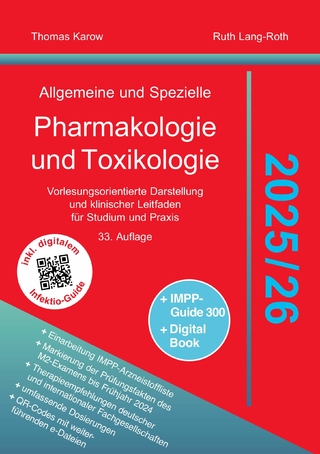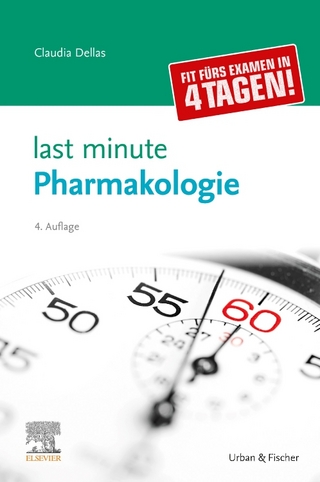
Neuropoisons, Their Pathophysiological Actions
Kluwer Academic/Plenum Publishers (Verlag)
978-0-306-37121-9 (ISBN)
- Titel ist leider vergriffen;
keine Neuauflage - Artikel merken
1 Clinical Aspects of Elapid Bite.- I. Introduction.- II. Elapidae.- A. Classification.- B. Geographic Distribution.- C. Venom Toxicity.- D. Venom Yield.- E. Epidemiology.- III. Symptomatology of Elapid Bite.- A. General Characteristics.- B. Local Poisoning.- C. Systemic Poisoning.- IV. Treatment.- A. Indigenous and Chemical Treatment.- B. First Aid.- C. Antivenins.- D. Cryotherapy.- E. Tracheostomy and Artificial Respiration.- F. Antibiotics and Tetanus Antitoxin.- G. Corticosteroids, Antihistaminics, and Other Drugs.- H. Treatment of Ophthalmia.- V. References.- 2 Mode of Action of Cobra Venom and Its Purified Toxins.- I. Introduction.- II. Chemistry of Cobra Venom.- A. Neurotoxins.- B. Cardiotoxin, Cobramines, DLF, Toxin ?, and Cytotoxin.- C. Enzymes.- D. Nonproteins.- III. Pharmacological Actions of Cobra Venom.- A. Toxicity, Symptoms Produced in Animals, and Cause of Death.- B. Absorption, Distribution, and Fate.- C. Actions on Neuromuscular Junction, Skeletal Muscle, and Nerve.- D. Action on Smooth Muscle.- E. Action on Sympathetic Ganglionic Transmission.- F. Action on the Cardiovascular System.- G. Local Action.- H. Actions on the Central Nervous System.- I. Actions on Blood.- J. Biochemical Effects.- K. Cytotoxic Effects.- IV. Concluding Remarks.- V. References.- 3 Symptomatology of Experimental and Clinical Crotalid Envenomation.- I. The Rattlesnake.- II. Rattlesnake Venom Potency.- A. Mouse.- B. Dog.- C. Monkey.- D. Averaged Potency.- III. Physiological Effects of Venom.- A. Effects of Venom on Cortical Electrical Activity.- B. Effects of Venom on Plasma Factors.- C. Effects of Actual Snake Bite.- IV. Treatment of Snake Bite.- V. Concluding Remarks.- VI. References.- 4 The Mechanism of Snake Venom Actions-Rattlesnakes and Other Crotalids.- I. Introduction.- A. Snakes in Family Crotalidae.- B. Components of Snake Venoms.- II. Action of Snake Venoms.- A. Local Actions.- B. Systemic Action.- C. Autopharmacological Effects.- D. Lethal Action of Snake Venoms.- III. References.- 5 The Use of Snake Venoms as Pharmacological Tools in Studying Nerve Activity.- I. Introduction.- II. Development and Differentiation of the Nervous System.- III. Neuronal Degeneration and Demyelination.- A. Immunosympathectomy by Antibodies to Nerve Growth Factor.- B. Neuropathological Changes Induced by Venoms.- IV. Axonal Conduction.- A. Use of Venoms as ChemicarDissectors.- B. Effects of Cholinergic Agents on Axonal Conduction.- C. The Acetylcholine Receptor.- D. Hyperexcitability.- V. Membrane Permeability.- A. Increased Permeability Induced by Venoms.- B. Structural Alterations Associated with Increased Permeability.- VI. Phospholipid Function in Nerve.- A. Component of Venom Responsible for Effects on Axon.- B. Mechanism of Phospholipase A Effects on Conduction and Permeability.- C. Maintenance of Conduction and Permeability in Presence of Phospholipid Splitting.- VII. Neuronal Metabolism.- A. Function and Structure of Mitochondria.- B. Acetylcholine-Synthesis, Storage, Release, and Hydrolysis.- VIII. Conclusions.- IX. References.- 6 Fugu (PufFer-Fish) Poisoning and the Pharmacology of Crystalline Tetrodotoxin in Poisoning.- I. Introduction.- II. Actual Conditions and Statistical Survey of Fugu Poisoning.- A. Varieties of Fugu.- B. Localization.- C. Influence of Season.- D. Statistical Survey.- E. Differences between Fugu Poisoning and Ciguatera.- III. Clinical Symptoms and Treatment of Fugu Intoxication.- IV. Pharmacological Actions Underlying Clinical Symptons.- A. Emetic Action.- B. Circulation.- C. Respiration.- D. Excitable Cells.- E. Nonexcitable Cells.- F. Biochemical Aspects.- G. Relationship between Chemical Structure and Pharmacological Action.- H. Absorption, Distribution, and Excretion.- V. Legislative Control for Preventing Fugu Poisoning in Japan.- VI. Tested Clinical Use of Crystalline Tetrodotoxin.- VII. References.- 7 Paralytic Shellfish Poisoning and Saxitoxin.- I. Occurrence and Distribution of Paralytic Shellfish Poisoning.- II. Shellfish Poisoning as a Public Health Problem.- III. Detection of Shellfish Poisoning.- IV. Isolation and Characterization of Shellfish Poisons.- V. References.- 8 Mechanism of Action of Tetrodotoxin (TTX) and Saxitoxin (STX).- I. Introduction.- II. The Nature of the Nerve Impulse.- III. Cellular Actions of TTX and STX.- A. Peripheral Nerve.- B. Skeletal Muscle.- C. The Acetylcholine System.- D. Action of TTX and STX on Generator Potentials.- IV. Comparison of TTX and STX.- V. Mechanism of Action.- A. The Active Form of TTX and STX.- B. Structure-Activity Relationship.- C. Possible Mechanism of Interaction.- D. The Interaction of TTX and STX with Calcium.- E. Model Systems.- VI. Conclusion.- VII. References.- 9 Tetrodotoxin and Saxitoxin as Pharmacological Tools.- I. Introduction.- A. History.- B. Chemistry.- II. Cellular Effects.- A. Properties of Excitable Membranes.- B. Actions of Toxins.- III. Pharmacological Uses.- A. The Early Transient Channel.- B. Synaptic Transmission.- C. Central Nervous System.- D. Generator Potentials.- E. Action Potentials Not Dependent on Sodium Ions.- F. General.- IV. Conclusion.- V. References.- 10 The Clinical Effects of Tetanus.- I. Tetanus: The World Problem.- II. Clinical Features.- III. The Natural History of Tetanus.- IV. Complications.- V. Causes of Death.- VI. Treatment.- A. Conservative Management.- B. Tracheostomy.- C. Intermittent Positive-Pressure Respiration.- VII. Prevention of Tetanus.- VIII. References.- 11 Biochemical and Physiological Aspects of Tetanus Intoxication.- I. Introduction.- II. The Toxin.- A. Components of Culture Filtrates.- B. Purification of Tetanus Toxin.- C. Molecular Weight of Tetanus Toxin.- D. The Relationship Between Dose and Response in Tetanus Intoxication.- III. Biochemical Mechanisms Involved in Tetanus Intoxication.- A. General Considerations.- B. Direct Action of Tetanus Toxin on Skeletal Muscle.- IV. Effect of Environmental Temperature on Tetanus Intoxication.- A. Activation Energy for the Process.- V. Binding of Tetanus Toxin.- A. Rate of Binding of Tetanus Toxin In Vivo.- VI. Physiology of Tetanus Intoxication.- A. Effects of Tetanus Toxin on Neuromuscular Junctions.- B. Effects of Tetanus Toxin on the Physiology of Skeletal Muscle and the Problem of Local Tetanus.- C. Dual Target Sites of Toxin Action: The Central Nervous System and the Skeletal Muscle.- VII. Summary.- VIII. References.- 12 Tetanus Toxin as a Neuropharmacological Tool.- I. Introduction.- II. Techniques of Administration.- III. Tetanus Toxin and Central Inhibition.- A. Spinal Cord.- B. Cerebral Cortex.- IV. Tetanus Toxin and Cholinergic Transmission.- A. Sphincter Pupillae.- B. Peripheral Neuromuscular Junction.- C. Central Cholinergic Junction.- V. Mode of Action.- VI. Conclusion.- VII. References.- 13 The Clinical Aspects of Botulism.- I. History.- II. Botulism as a World Health Problem.- A. The Disease in Humans.- B. The Disease in Animals.- III. Epidemiologic Considerations.- IV. Pathogenesis.- V. Clinical Features of Botulism.- VI. Diagnosis.- A. Routine Laboratory Studies.- B. Electrocardiographic, Electroencephalographic, and Electromyographic Studies.- C. Specific Diagnosis.- D. Differential Diagnosis.- VII. Treatment.- VIII. Prognosis and Recovery.- IX. Remaining Problems.- X. References.- 14 The Neuroparalytic and Hemagglutinating Activities of Botulinum Toxin.- I. Introduction.- II. Characterization of the Botulinum Toxin Molecule.- A. Purification of Botulinum Toxin.- B. Attempts to Separate Neurotoxin and Hemagglutinin.- III. Botulinum Hemagglutinin.- IV. Target Organs of Botulinum Neurotoxin.- V. Mechanism of Neurotoxin Action.- A. Peripheral Cholinergic System.- B. Central Nervous System.- VI. Reactive Sites Involved in Neurotoxin Activity.- A. Free Amino Groups.- B. Fluorescence and Toxicity.- C. Tryptophan.- VII. Conclusion.- VIII. References.- 15 Botulinum Toxin as a Tool for Research on the Nervous System.- I. Introduction.- II. Neuromuscular Transmission.- III. Botulinum Toxin as a Pharmacological Tool.- A. Characteristics of an "Ideal Blocking Agent".- B. Comparison of Botulinum Toxin with Ideal Model.- IV. The "Trophic" Effects of Nerves.- A. Scope and Definition of the Problem.- B. Motor Nerves and Skeletal Muscle.- C. Possible Trophic Mechanisms.- D. Red and White Muscle.- E. Other Trophic Neuromuscular Relationships.- F. Conclusions.- V. Botulinum Toxin and the Autonomic Nervous System.- A. Parasympathetic Nervous System.- B. Sympathetic Nervous System.- VI. Botulinum Toxin as a Marker of Cholinergic Synapses: A Possible Future Use.- VII. The Role of Movement in the Development of Joints: A Model System.- A. Soft-Tissue Ankylosis.- B. Abnormalities of Joint Cavities and Other Articular Structures.- VIII. References.- IX. Appendix.
| Erscheint lt. Verlag | 31.12.1995 |
|---|---|
| Zusatzinfo | biography |
| Sprache | englisch |
| Maße | 150 x 230 mm |
| Themenwelt | Medizin / Pharmazie ► Medizinische Fachgebiete ► Pharmakologie / Pharmakotherapie |
| Studium ► 2. Studienabschnitt (Klinik) ► Pharmakologie / Toxikologie | |
| Veterinärmedizin | |
| ISBN-10 | 0-306-37121-9 / 0306371219 |
| ISBN-13 | 978-0-306-37121-9 / 9780306371219 |
| Zustand | Neuware |
| Informationen gemäß Produktsicherheitsverordnung (GPSR) | |
| Haben Sie eine Frage zum Produkt? |
aus dem Bereich


